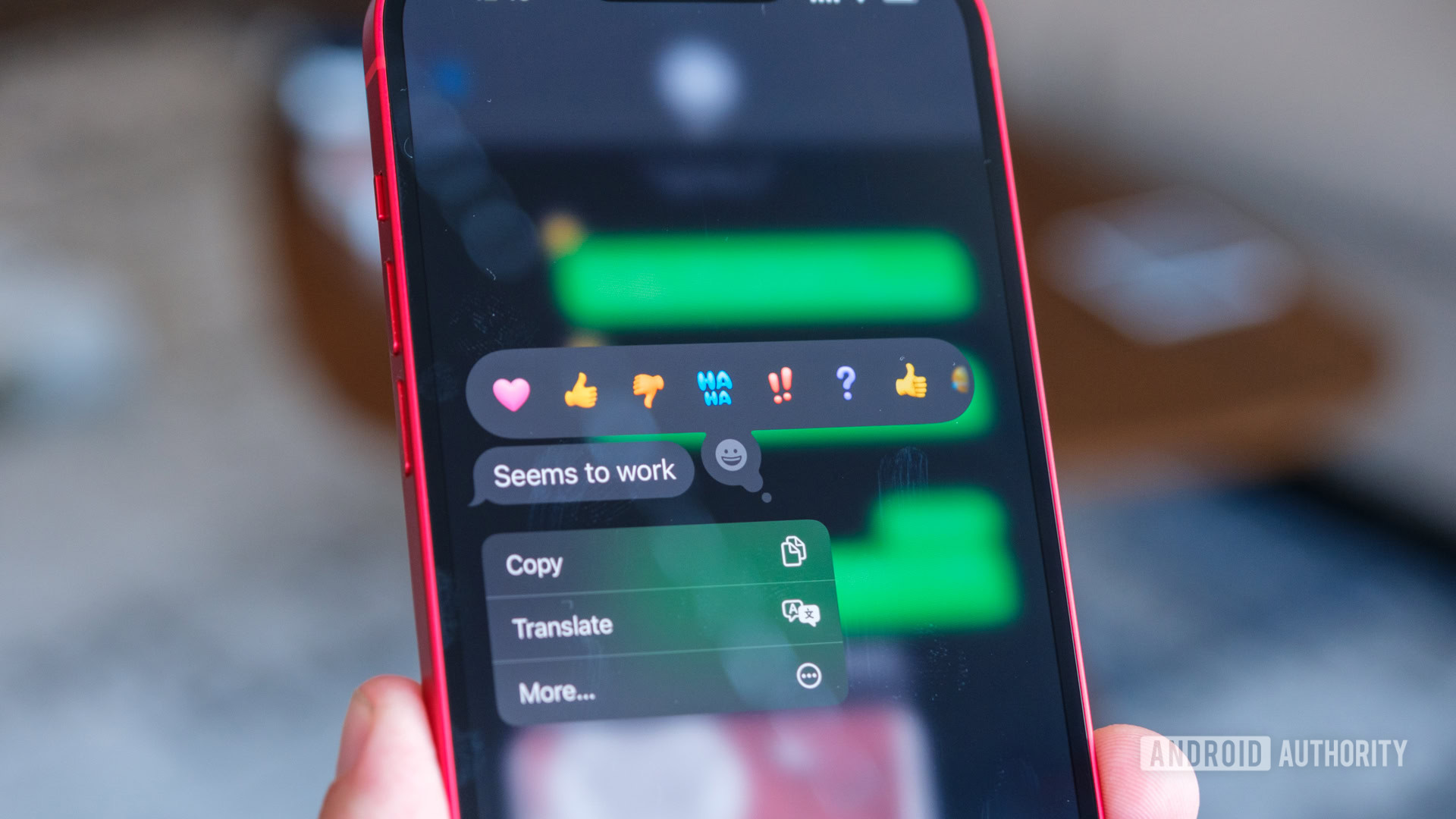
Ryan Haines / Android Authority
Even over text, I can spot some of the signs that my partner is mad at me. I might not know if I’ve said or done something wrong right away, and then I send a message to which I might expect an effusive response. What do I get instead? A thumbs-up emoji. That’s when I know I’m in trouble.
As a millennial who grew up watching the evolution of messaging, I’ve noticed this shift in the meaning of the once-reliable thumbs-up emoji. It was once one of the few go-to emojis — an easy way to acknowledge a message without too much effort. But I tend to avoid it these days, and it’s not just me.
Do you use the thumbs-up emoji?
0 votes
From a thumbs-up to a brush-off

Ryan Haines / Android Authority
I can’t speak for everyone, but in my interactions, the thumbs-up has taken on a different vibe. My parents still use it all the time as a straightforward, positive affirmation for which it was initially intended. But for me, and especially for younger people I interact with, it can feel almost dismissive. It seems to mean more of a “whatever” or “okay, sure.” It’s not exactly warm and fuzzy. And I get it. Somehow, this emoji that used to be either positive or neutral has started to feel passive-aggressive in certain contexts.
The thumbs-up emoji, which used to be either positive or neutral, has started to feel passive-agressive in some contexts.
Why has the thumbs-up emoji seemingly gone from the digital equivalent of a friendly nod to an eye-roll? I think it’s partly because of how quick and effortless it is. There’s no real emotion behind it. It might be efficient, but it doesn’t always come across as warm or genuine. When you send someone a thumbs-up, it can almost feel like it’s in lieu of a more thoughtful response and that you’re just trying to end the conversation.
A generational divide

Younger people seem to have moved on. Emojis like the heart (❤️) or the hands-up (🙌) are now doing the heavy lifting when it comes to showing actual enthusiasm or approval. There are various Reddit threads such as this one on which people, especially Gen Z users, find the thumbs-up emoji to be cold or even sarcastic. It makes sense when you think about it. A thumbs-up is quick, but a heart feels more genuine. Emojis are a stand-in for body language, and the thumbs-up just isn’t doing the job anymore.
This whole emoji evolution isn’t surprising. Language changes all the time, and emoji language is no exception. I’ve noticed that people my age are way more selective about which emojis they use. Emojis like the heart and the perfect sign (👌) have replaced the thumbs-up for us because they feel more emotionally expressive.
My parents certainly aren’t giving up on the thumbs-up.
There are clearly generational differences, and my parents certainly aren’t giving up on their beloved thumbs-up. To them, it still works exactly as it always did. Studies have found that older generations tend to favor simpler, more direct emojis, while younger users experiment with a wider range to convey emotion. That’s probably why, when my parents send me a thumbs-up, I know they’re being encouraging. But if my girlfriend sends me one, I brace for impact.
We also see the evolution of emojis on social media platforms, although this can get a bit more complicated. Facebook is still sticking with the thumbs-up as the way to “like” a post as it always has, whereas platforms such as Instagram and TikTok — catering to a younger demographic — now use the heart emoji. YouTube still offers the thumbs-up emoji for likes, but the distinction there is that it’s opposed to a “dislike” button, represented by the thumbs-down emoji.
Is the thumbs-up emoji on the way out?

Mishaal Rahman / Android Authority
I doubt anyone is mourning the decline of the thumbs-up emoji, but it’s not going to disappear completely anyway. It still holds value in certain contexts, like workplace chats or quick acknowledgments, where brevity is key. Its decline in popularity, especially in personal conversations, just shows how digital language continues to evolve. Emojis, like all forms of communication, are subject to changing cultural and generational norms.
It’s also worth remembering that the language of emojis is still only a few decades old. The thumbs-up may be relegated to the sidelines and replaced by more expressive symbols, but we don’t yet have the cyclical data of other cultural evolutions, such as language or fashion. Just as a hairstyle that was last popular in the 80s might suddenly come back into vogue, the thumbs-up emoji might one day get a new lease of life in terms of use, even if only in a retro sense.








